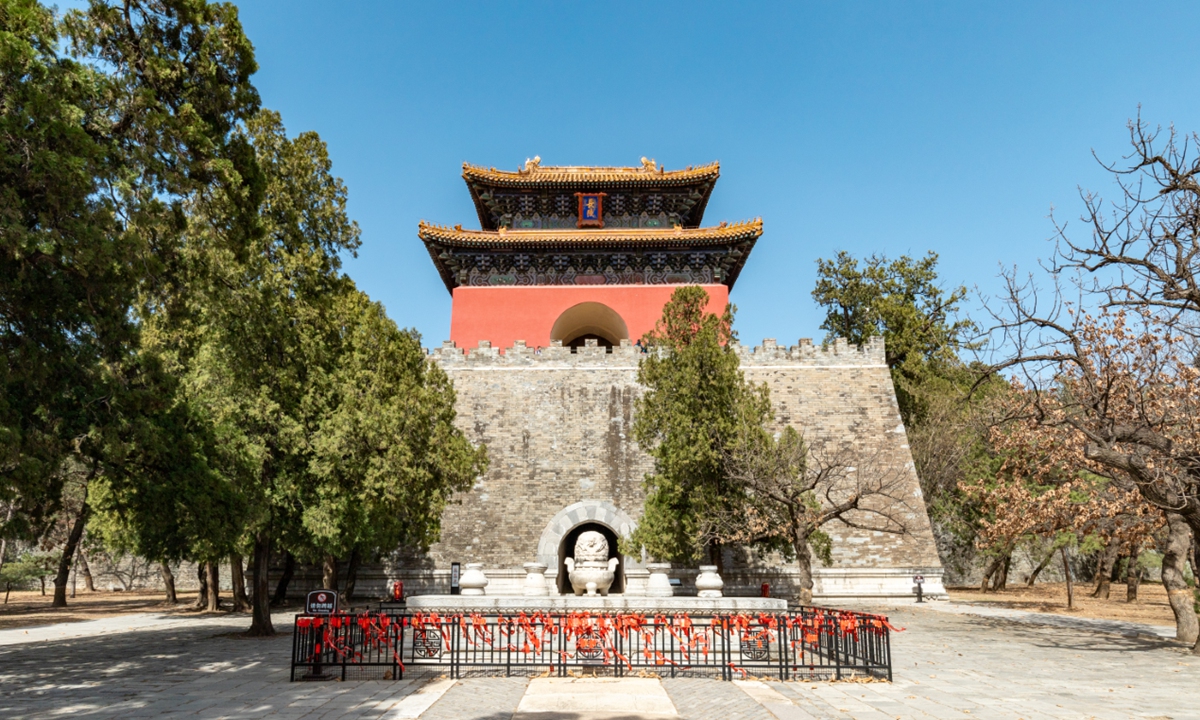ARTS / CULTURE & LEISURE
13 Ming Dynasty emperors' tombs to fully open by 2030

Ming Tombs Photo: VCG
The announcement was made during the 2024 Ming Dynasty Culture Forum. Construction on the Ming Tombs, the burial grounds of 13 Ming Dynasty (1368-1644) emperors, began in 1409 during the reign of the Yongle Emperor and continued until the early Qing Dynasty (1644-1911), spanning over 230 years. It is one of the most well-preserved tomb complexes in the world today and holds the most emperors' graves. Currently, only three tombs have been opened to the public.
According to a report from the Beijing Daily, the expansion will be carried out in three phases from 2024 to 2030. The first phase, from 2024 to 2025, will see the opening of the Siling Tomb and Yongling Tomb, the tombs of the 16th and 11th emperors of the Ming Dynasty, respectively.
The second phase, from 2026 to 2028, will include the Maoling Tomb, the Tailing Tomb, the Deling Tomb, and the ruins of the Palace (the temporary residence for emperors visiting the tombs). The Maoling Tomb, Tailing Tomb, and Deling Tomb are the tombs of the 8th, 9th, and 15th emperors of the Ming Dynasty, respectively.
The third phase, from 2029 to 2030, will see the opening of the Xianling Tomb, Yuling Tomb, and Qingling Tomb, the tombs of the 4th, 6th, and 14th emperors, respectively. The goal is to fully open all the Ming tombs to the public by 2030.
Once fully open, the Ming tombs will feature a variety of exhibits, showcasing artifacts, ancient buildings, tombs, and cultural heritage sites. These displays will present the construction of the tombs, the architectural characteristics of Ming Dynasty imperial mausoleums, and the building techniques used during that period.
"We will also utilize digital platforms and autonomous tour vehicles to provide virtual exhibitions. These will include basic information about the heritage site, its cultural value, transportation details, historical research, documents, archives, and images, offering a comprehensive view of Ming culture's history and unique charm," a representative from the Ming Tombs management center said.
The main path of the Ming Tombs, which connects the tombs, will also be improved. The Changping district plans to integrate the 7.3-kilometer main path with nearby heritage sites.
Restoration work on the outer wall of the Ming Tombs will also be carried out, along with the construction of scenic trails and viewing platforms. These efforts aim to "present the historical layout and offer a broader perspective for visitors to appreciate the world heritage site," said the report.
In the future, the Ming Tombs will be developed into a national archaeological site park, using valuable world cultural heritage resources to promote regional economic and social development and improve local residents' living standards.
Additionally, customized cultural and tourism projects will be designed according to the unique characteristics and historical features of each tomb, according to the report.
The Changping district also plans to establish a comprehensive Ming Culture museum and tourism complex, inviting global project design proposals. The complex will be surrounded by rich cultural and tourism resources, commercial services, and research industries, including the Ming Tombs and Juyongguan Great Wall.
Upon completion, the project aims to "become the world's most renowned Ming Culture exchange center, China's most influential Ming Culture-themed exhibition area, and a distinctive cultural and tourism hub in the northwestern part of the capital," said the report.
